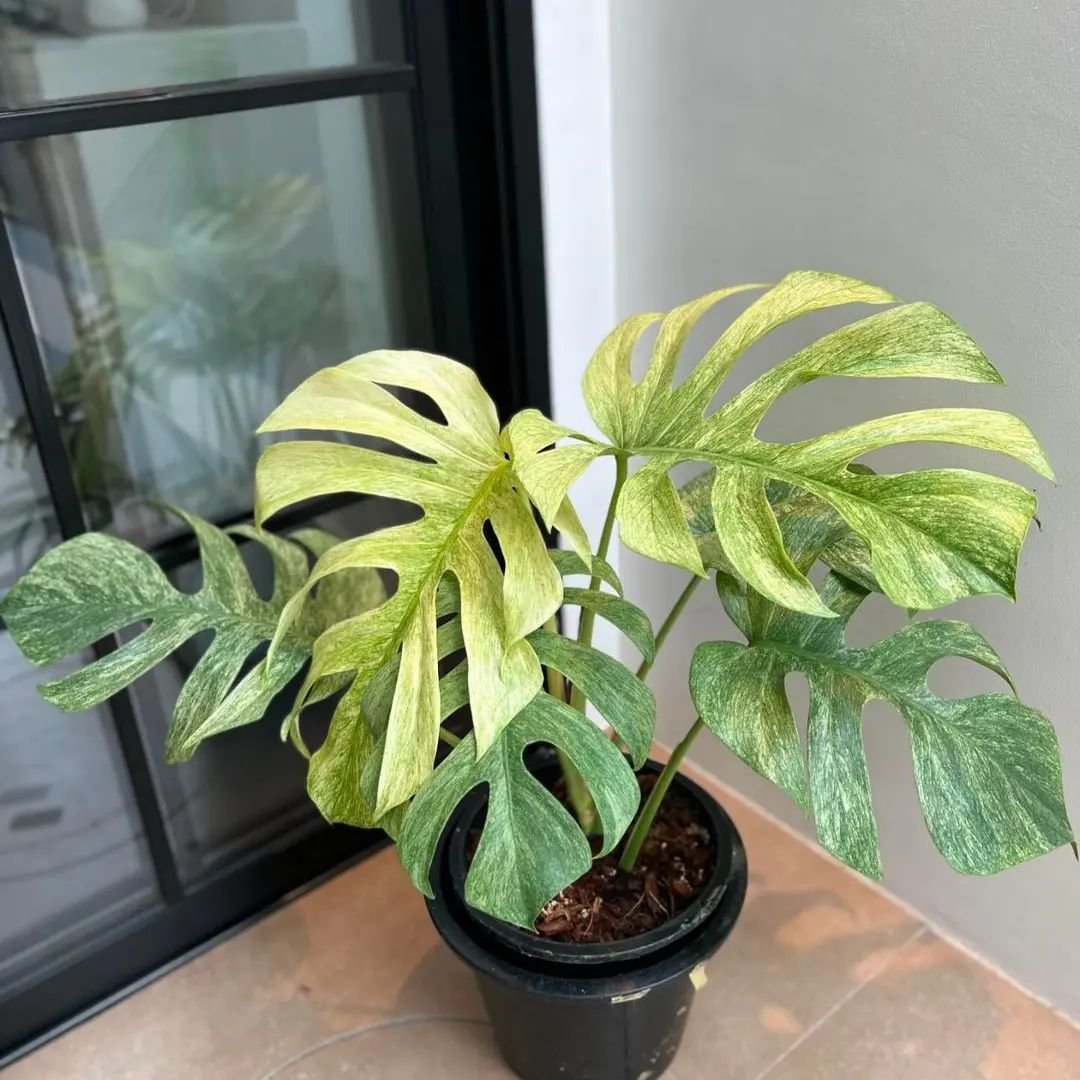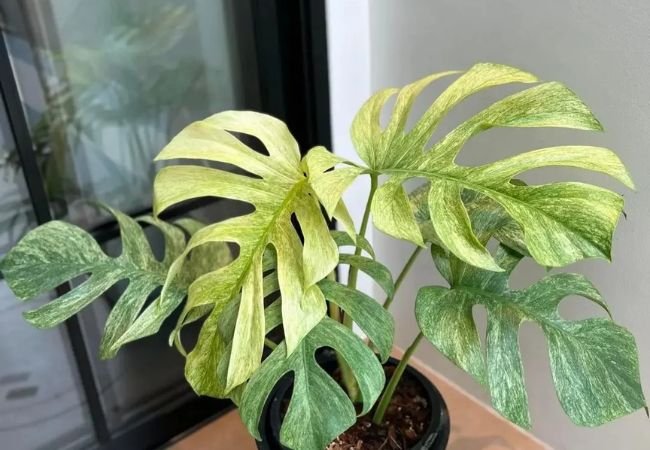Learn the secrets to growing and caring for the beloved Monstera plant. This comprehensive guide covers everything from soil requirements and watering schedules to pruning techniques and dealing with common pests and diseases. Master the art of cultivating these gorgeous, tropical beauties with ease.
The Monstera a true tropical gem, has captured the hearts of plant enthusiasts worldwide with its striking foliage and captivating presence. Whether you’re a seasoned green thumb or a budding plant parent, mastering the art of nurturing this remarkable species can elevate your indoor oasis to new heights. In this comprehensive guide, we’ll unravel the mysteries of the Monstera, equipping you with the knowledge and techniques to ensure its magnificent growth and radiant health.
Here’s a short chart with information about the Monstera plant (Monstera deliciosa):
| Aspect | Information |
|---|---|
| Botanical Name | Monstera deliciosa |
| Common Names | Monstera, Swiss Cheese Plant, Split-Leaf Philodendron |
| Plant Type | Evergreen perennial |
| Zones | 10-12 (outdoor); typically grown as a houseplant |
| Exposure | Bright, indirect light |
| Bloom Time | Rarely blooms indoors |
| Height/Spread | 6-10 feet tall indoors, up to 20 feet outdoors; 3-6 feet spread |
Understanding the Monstera

A Glimpse into the Tropical Marvel
Before we delve into the intricacies of Monstera care, let’s take a moment to appreciate the origins and unique qualities of this enchanting plant. Hailing from the lush rainforests of Central and South America, the Monstera belongs to the Araceae family and boasts an impressive array of adaptations that have captured the imagination of botanists and plant lovers alike.
Unraveling the Majestic Foliage
One of the most striking features of the Monstera is its distinctive foliage, adorned with natural perforations that resemble intricate lace patterns. These perforations, known as fenestrations, serve a purpose beyond mere aesthetics – they allow the plant to capture sunlight more efficiently and shed excess moisture, ensuring optimal growth and vitality.
Cultivating a Thriving Monstera
Selecting the Perfect Pot and Soil
To nurture your Monstera to its full potential, choosing the right pot and soil is crucial. These tropical beauties thrive in well-draining potting mixes designed for indoor plants, typically consisting of a blend of peat moss, perlite and bark chips. Avoid using regular garden soil, as it can become overly compacted and retain excessive moisture, leading to potential root issues.
Mastering the Art of Watering
Proper watering is a delicate balance when it comes to Monstera care. These plants appreciate consistent moisture but they abhor waterlogged conditions. The golden rule is to water your Monstera when the top inch or two of soil feels dry to the touch. During the active growing season (spring and summer) you may need to water once or twice a week, while in the winter months a biweekly watering schedule should suffice.
Illuminating the Path to Optimal Growth
Monsteras are remarkably adaptable when it comes to light requirements but they generally prefer bright, indirect sunlight. Direct intense sunlight can scorch their delicate leaves, while too little light can inhibit growth and prevent the development of those coveted fenestrations. Aim to position your Monstera near an east or west-facing window or filter the light from a south-facing window with sheer curtains.
Creating a Tropical Oasis
As tropical natives, Monsteras thrive in warm, humid environments. Ideally, they prefer temperatures between 65°F and 80°F (18°C to 27°C) and humidity levels above 50%. If your home is on the drier side, you can increase humidity by placing a pebble tray filled with water near your plant or using a humidifier. Occasional misting of the leaves can also help, but be cautious not to overdo it, as excessive moisture can promote fungal growth.
Nourishing for Lush Growth
Like any plant, Monsteras benefit from regular fertilization, especially during their active growing season. Use a balanced, water-soluble fertilizer diluted to half-strength every two to four weeks. Overfeeding can lead to salt buildup in the soil and potentially damage the plant’s delicate root system, so moderation is key.
Maintaining and Propagating Your Monstera
The Art of Pruning
As your Monstera matures, regular pruning becomes essential to maintain its shape and remove any damaged or discolored leaves. Use clean, sharp scissors or pruning shears and make your cuts just above a node (the point where a leaf or aerial root emerges from the stem). Pruning not only promotes a well-groomed appearance but also encourages new growth and helps control the plant’s size.
Propagating for Endless Greenery
Pruning also presents an excellent opportunity to propagate your Monstera, allowing you to expand your collection or share the joy with fellow plant lovers. Simply take a stem cutting with a few nodes and place it in a jar of water or directly into moist soil. With proper care and patience, these cuttings will eventually develop roots and grow into new thriving plants.
Combating Pests and Diseases
Identifying and Controlling Common Pests
Like any plant, Monsteras can be susceptible to pest but with vigilance and swift action, infestations can be easily managed. Common pests include spider mites, mealybugs, and scale insects. If you notice any signs of infestation, such as tiny webs, white cottony masses or sticky residue, act quickly by isolating the plant and treating it with an appropriate insecticidal soap or neem oil solution.
Preventing and Treating Diseases
While Monsteras are generally resilient plants, they can still fall prey to certain diseases, most notably root rot and leaf spot. Root rot is typically caused by overwatering and can be prevented by ensuring proper drainage and avoiding waterlogged soil. Leaf spot, on the other hand is often a result of fungal or bacterial infections and can be managed by removing affected leaves and improving air circulation around the plant.
With patience, dedication and the right care routine, your Monstera will thrive and reward you with its stunning foliage for years to come. Remember, every plant is unique, so don’t hesitate to adjust your care techniques if your Monstera seems to be struggling. Embrace the journey of nurturing this tropical marvel and watch as it transforms your indoor space into a verdant oasis of tranquility and natural beauty.








Leave a Reply